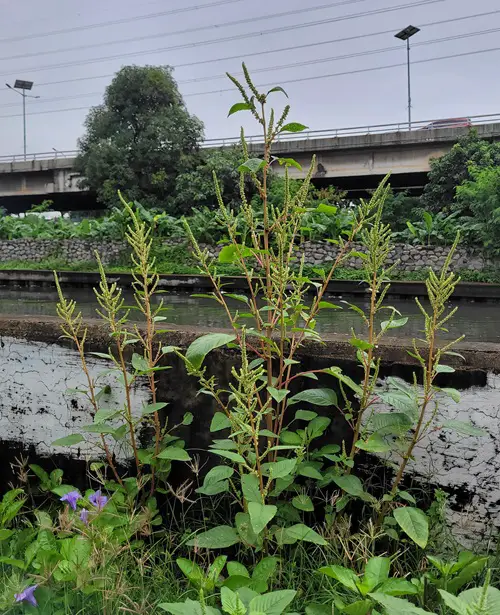Beware! These are the Most Common and Troublesome Weeds Found in the States! So, weed them out before they invade your garden!
It is indeed painful to find unwanted plants taking over your carefully curated vegetation. While not all weeds are garden enemies, the ones on this list surely are! Learn to recognize the most common and persistent weeds found in the states, and save your garden from invasion now.
Most Common Weeds Found in the USA
1. Canada Thistle
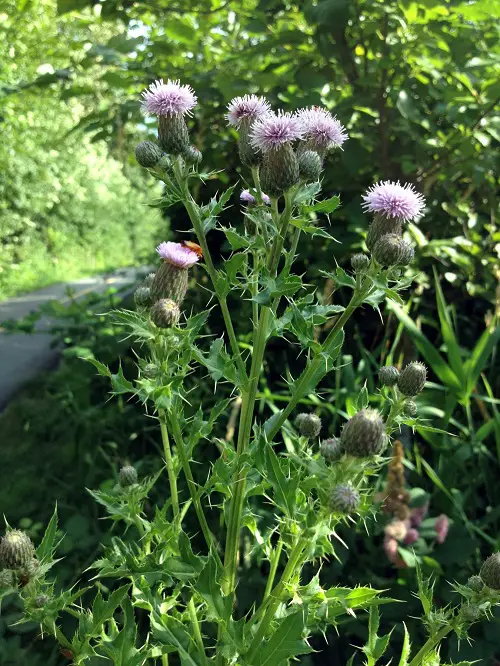
Botanical Name: Cirsium arvense
USDA Zones: 2-8
This North American weed is highly invasive, forming dense colonies that disrupt biodiversity and displace native species. Canada thistle starts as a low-growing rosette whose leaves gradually mature and lengthen with their spines, producing lavender flower heads.
It spreads by rhizomes and is difficult to control, as it quickly takes over large areas. It cannot tolerate shade, so it loves to spread on sunny grasslands, pastures, stream banks, and wet meadows.
2. Black Swallow-wort
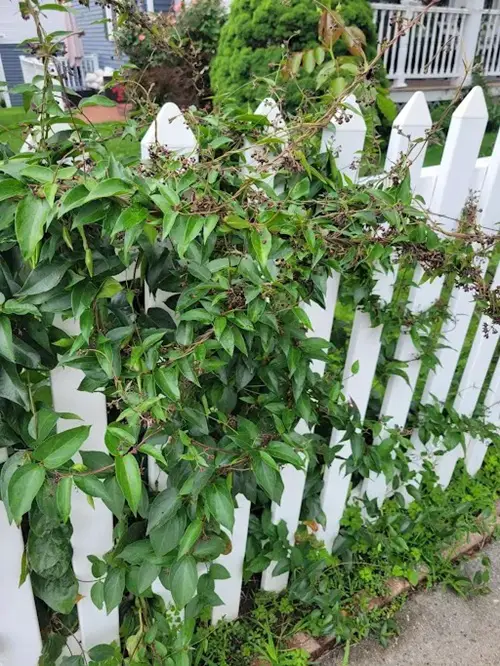
Botanical Name: Vincetoxicum nigrum
USDA Zones: 4-8
This pretty herbaceous vine with twining stems and star-shaped velvety purple blooms is actually super toxic! Native to Europe, it was brought to the USA sometime in the 1800s and cultivated to be naturalized. However, it quickly escaped the botanical gardens and took over the entire region.
This milkweed family member is toxic to monarch butterflies. Legally, you must destroy all of its parts before it spreads!
3. Garlic Mustard
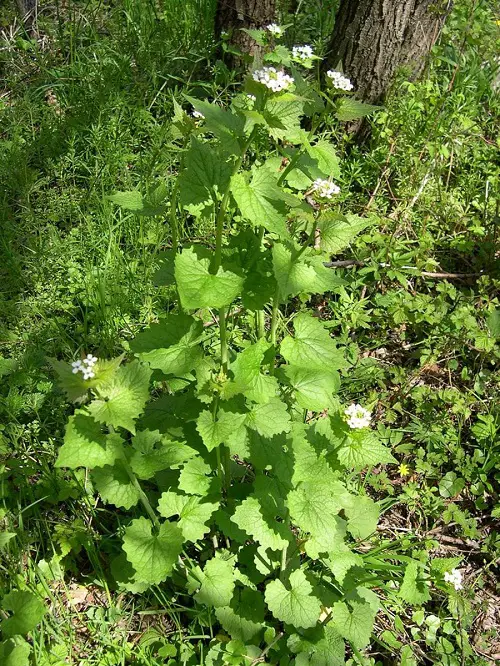
Botanical Name: Alliaria petiolata
USDA Zones: 5-8
With rosettes of heart-shaped, edible leaves and delicate white bloom clusters, garlic mustard is again a European native brought to North America for its medicinal properties. But this highly invasive weed quickly outcompetes native species and even releases allelochemicals into the soil that suppress the growth of other plants.
This weed can release hundreds of seeds that remain viable in the soil for up to five years. It easily attaches to the feet and fur of animals and humans and spreads like wildfire! However, it does not regrow from root fragments, so you can simply yank it out to keep it tame.
4. Palmer Amaranth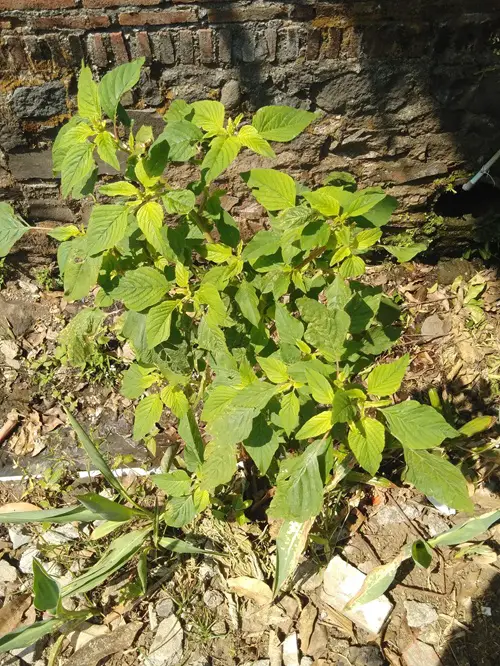
Botanical Name: Amaranthus palmeri
USDA Zones: 5-10
Unfortunately, this highly nutritious, edible plant was voted the “most troublesome and difficult to control weed” in broadleaf crops, fruits, and vegetables. Once widely cultivated and consumed by Native Americans, the plant is now barely considered a food source and is seen just as a noxious weed that threatens other vegetation.
This annual herb produces seeds at a prolific rate; it’s best to till the soil before the seeds set, using cover crops to suppress growth.
5. Field Bindweed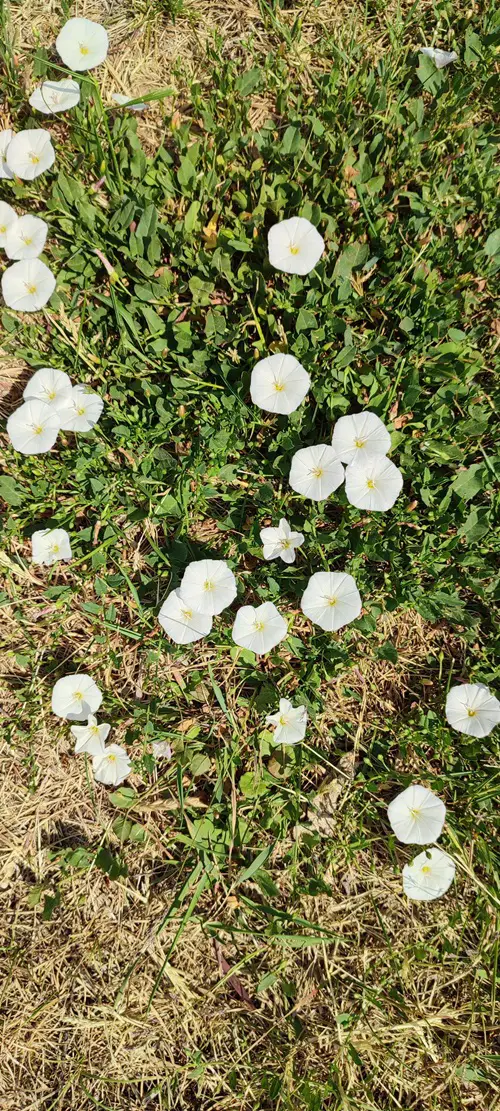
Botanical Name: Convolvulus arvensis
USDA Zones: 3-10
A slender perennial vine with pretty white and pink blooms, field bindweed climbs over other plants and smothers them. With its abundant seeds and robust root system that can reach over 20 feet deep, it vigorously spreads and colonizes native plants.
If field bindweed is found, the land loses its value, as it precludes the planting of fruits, nuts, and vegetable crops. The best way is to prevent seeds from setting and manually removing weeds, mowing, and herbicides may help deter its growth.
6. Creeping Charlie

Botanical Name: Glechoma hederacea
USDA Zones: 3-10
Also called Ground Ivy, this European native is now widespread in the USA. It was brought by settlers who believed it would make a good ground cover for shade. Little did they know how aggressive it would get! It spreads by seed and stems that creep along the ground, thriving in moist, shadowy areas.
So, pruning big trees and thick foliage to allow sunlight to filter through, drying out the soil, and regular mowing will likely control its growth. Also, try growing shade-loving plants like hosta that compete with these weeds, keeping them in check.
7. Waterhemp
Botanical Name: Amaranthus tuberculatus
USDA Zones: 4-8
Native to Iowa and the western corn belt plains—a key agricultural region in the USA— waterhemp competes with crucial crops like corn and soybean. Growing up to eight feet tall, it varies in shape and color, making it hard to spot.
Highly resistant to herbicides, this weed prefers poorly drained soil and grows naturally in fields and disturbed areas. Early tilling and mowing before seeds set, and rotating crops may help control its spread.
8. Hairy Nightshade

Botanical Name: Solanum sarachoides
USDA Zones: 4-9
One of the most troublesome nightshades, these plants are considered weeds because they can host pests and infect related crops like tomatoes and peppers with diseases. Hairy nightshade, a variety found commonly in California, is often resistant to herbicides.
It inhabits orchards, vineyards, crop fields, pastures, and a range of disturbed areas and is toxic to both humans and livestock.
9. Common Lambsquarters

Botanical Name: Chenopodium album
USDA Zones: 2-11
This broadleaf edible, found throughout the United States, is highly nutritious and replete with iron, proteins, and vitamins—even more than spinach! But, this weed aggressively competes with corn, soybean, and various vegetables, drastically reducing their yields.
This annual herb grows with diamond-shaped leaves that have a powdery coating. It drops thousands of seeds that can remain viable in the soil for years! Herbicides and tilling may help deter its growth.
10. Bull Thistle
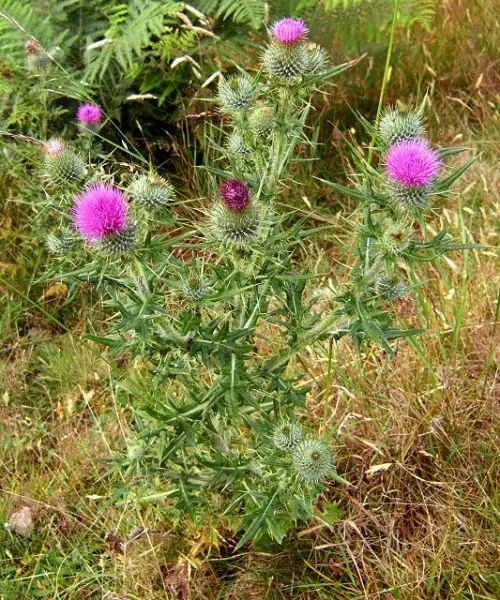
Botanical Name: Cirsium vulgare
USDA Zones: 2-10
This is a widely found thistle, mainly in the Pacific states of the USA. Bull thistle is native to Europe and Asia but has a massive presence in the USA. It spreads fast, but luckily, it is not that hard to control compared to others.
You can easily identify it with its coarsely lobed leaves with spines at the tip. Its bright pink flowers are larger than other thistle varieties, which adds to its beauty.
11. Crabgrass

Botanical Name: Digitaria sanguinalis
USDA Zones: 3-10
This weed is identified by its round stems and lime-green leaves and is widely found in the US’s northeastern states and warm-season climates. It is a troublesome weed for gardeners, and it has three different cultivars–Digitaria sanguinalis, Digitaria ischaemum, and Digitaria ciliaris.
The grass thrives in lawns, and you will often encounter it in places like golf courses, orchards, and waste places.
12. Broadleaf Plantain
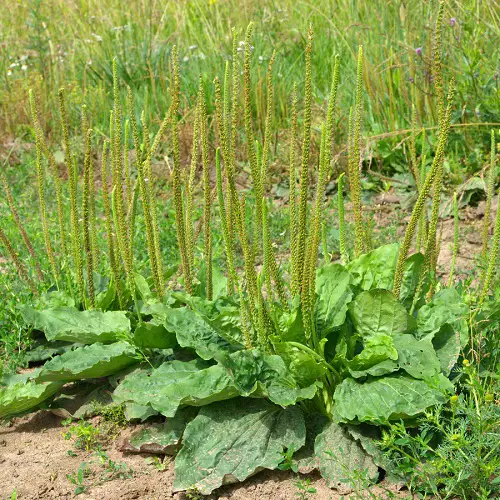
Botanical Name: Plantago major
USDA Zones: 3-12
This plant, with veined broad green leaves is edible and medicinal, commonly used in salads, teas, and soups. However, its ability to thrive in poor soil conditions and its strong fibrous roots that allow it to anchor in place while forming dense patches threaten the health of lawns and grassy gardens.
This weed is more resilient than most others, which makes it more widely spread all the climates across all the USDA Zones. Many weeds don’t survive in soggy sites, but this one thrives.
13. Bishop’s Weed
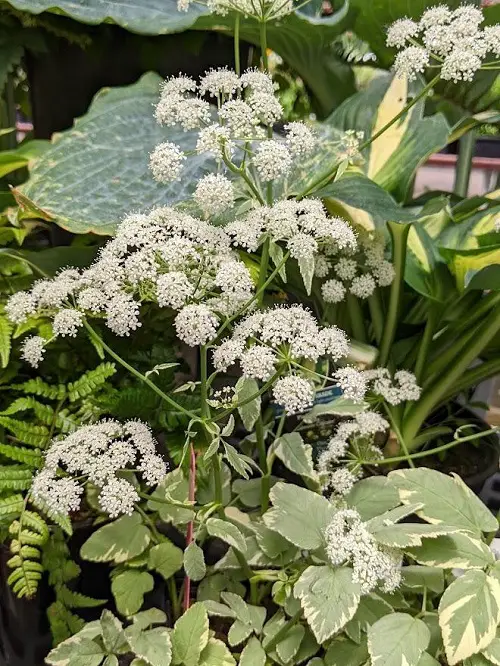
Botanical Name: Aegopodium podagraria
USDA Zones: 3-9
Also popular as Goutweed, this European and Asian native did not start its journey as a weed. Producing petite umbrella-shaped white flowers, it was actually grown as an ornamental ground cover. Over time, it spread and displaced native vegetation, aided by its strong underground rhizome network.
Due to its low-maintenance, shade-tolerant qualities, it is especially harmful to dimly lit gardens where it outcompete and smothers neighboring plants.
14. Common Pokeweed
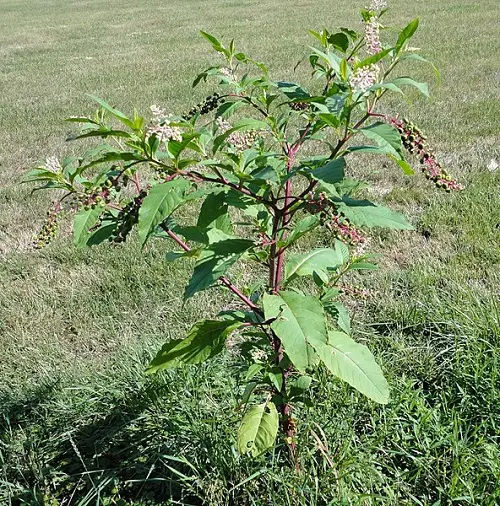
Botanical Name: Phytolacca americana
USDA Zones: 4-8
Stealing resources from tomatoes, peppers, and leafy greens, this perennial herb can grow up to 10 feet tall! Also called Inkberry for its dark reddish-purple berries that stain when crushed, this weed grows wildly on forest edges, pastures, roadsides, and other disturbed areas.
Now, if you want to prevent it from colonizing your garden, remove it entirely from the depths of its extensive taproot. Also, cut it before it drops seeds.
15. Canadian Clearweed
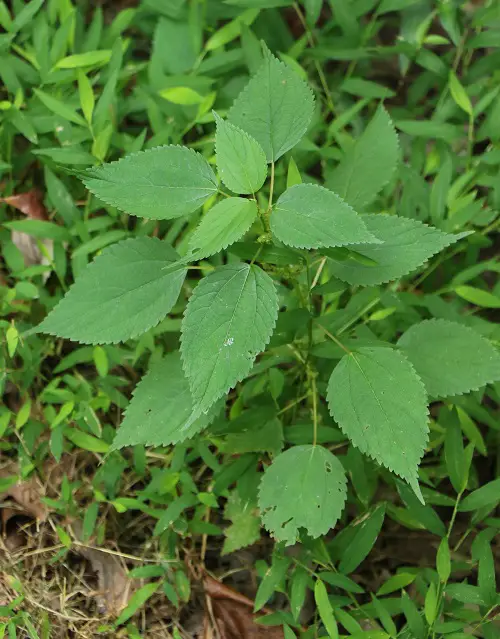
Botanical Name: Pilea pumila
USDA Zones: 3-7
Finally, the last one on our list of the most common weeds in the USA is another European native. Its rapid growth pattern encourages it to form large colonies. Found largely in wetland and riparian areas, it competes with native aquatic plants, disrupting local biomes.
With shiny green leaves and clusters of pink and purple blooms, it spreads via seeds and vigorous rhizomes.


